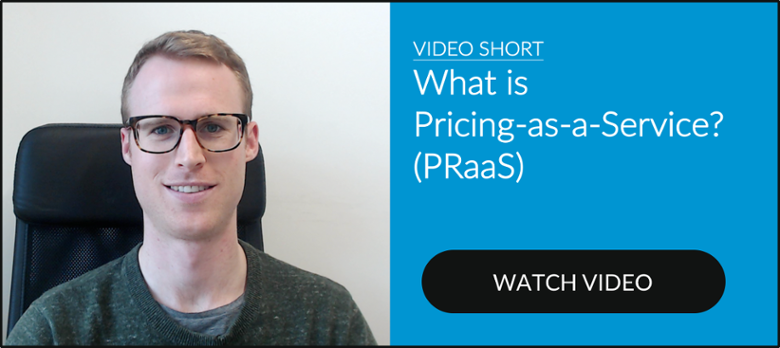How many times have we stressed the importance of getting your pricing right? Too often you might say.
It's just that it's truly vital to optimise prices if you are serious about growing your profits. If your prices are too high, you'll put off potential customers. Aim too low, and you'll throw away potential profit - and risk making customers believe your products or services are inferior to those of higher-priced competitors.
Finding the perfect balance between profit and value is essentially what price optimisation is all about, and because the relative values of goods and services constantly change, this is a never-ending task for most businesses – successfully optimising prices means continually taking in new data and updating prices dynamically.
In today's volatile markets, if prices CAN be dynamically optimised, someone sooner or later is going to do this and any business failing to do so will eventually come off badly – traditional taxis v Uber is one example.
Price optimisation leverages historical data to drive more revenue or margin by adjusting the price or prices customers see and pay. This means that a business can predict demand and then match prices to conform to expected demand.
Price optimisation done correctly results in more closely matching supply and demand, enabling a company to capture more profits while also serving more customers and increasing customer satisfaction. Executed badly, it can result in disgruntled customers, reduced revenue and margin, or perhaps all three.
To assist in this vital process, software companies have developed price optimisation software packages to handle the complex calculations required. The pricing software can be tailored to meet the needs of both B2C or B2B companies.
How to optimise prices
Price Optimisation Models are mathematical programs that calculate how demand varies at different price levels. The resulting data is then combined with information on costs and stock levels to recommend prices that will improve profits.
Price optimisation can be used to tailor pricing for customer segments by simulating how targeted customers will respond to price changes with data-driven scenarios. Given the complexity of pricing thousands of items in highly dynamic market conditions, the results help to forecast demand, develop pricing and promotion strategies, control stock levels and improve customer satisfaction.
Price Optimisation Models help businesses determine initial pricing, promotional pricing and discount pricing:
Initial price optimisation works well for companies with a secure base of long life-cycle products, e.g. supermarkets, chemists, office supply stores and commodities manufacturers.
Promotional price optimisation helps set temporary prices to boost sales of items with long life-cycles - newly introduced products, products bundled together in special promotions and loss leaders.
Discount price optimisation helps businesses selling short lifecycle products subject to fashion trends and seasonality such as airlines, hotels, clothing stores.
There are three crucial requirements if you want to optimise prices:
- Different willingness to pay amongst customers
- Data upon which to base a reliable demand forecast
- The ability to segment prices based on willingness to pay
Examples of price optimisation
- Airline fares varying by time of day/year, type of trip or closeness to departure date
- Uber "surge pricing" where prices increase during times of higher demand, e.g. during public transport strikes, New Year's Eve or the evening rush-hour.
- Rental car rates varying by location, type of car, and time of day or week.
- Supermarkets promoting items with different discounts to different customers based on historical purchase behaviour or expected size of a basket at checkout.
- Pharmacies adjusting the margin on certain items, choosing some "loss leaders" to induce customers into the store and to hopefully purchase other items with much higher margin.
- Fashion stores marking down stock as the season is coming to an end.
- Online retailers matching the price on competitive items while increasing margin on unique items only they carry.
Review Your Pricing Strategy
Few decisions have as large an impact on the success of your business as optimising prices. Your prices influence how many customers actually purchase your products, how your product is perceived, the types of customers you attract - and sales revenue. This all has a direct effect on your profits.
Every pricing decision you make should offer a win-win outcome where your customers get good value for their money and can grow profits. So, start a review of your pricing strategy without delay – and consider investing in price optimisation software to maximise your profits.
Related Posts
Your Priority Should be Profitable Growth Not Higher Prices
Sources
http://www.expertek.co.uk/wp-content/uploads/resources/Article-HowtooptimisethepriceV2.0.pdf
https://www.icaew.com/en/archive/library/subject-gateways/marketing-and-sales/sales/small-business-update/optimise-your-pricing
The Strategy and Tactics of Pricing, Tom Nagle and John Hogan, 2016
Pricing with Confidence: 10 Ways to Stop Leaving Money on the Table, Reed K. Holden and Mark Burton, 2014
Pricing Strategy: Tactics and Strategies for Pricing with Confidence, Warren D Hamilton 2014
Pricing Optimization: Striking the Right Balance for Margin Advantage: NAW Institute for Distribution Excellence and Texas A&M University’s Industrial Distribution Program, 2009
Pricing and Revenue Optimization by Dr. Robert L. Phillips, 2005
The Art of Pricing: How to Find the Hidden Profits to Grow Your Business by Rafi Mohammed, 2005


